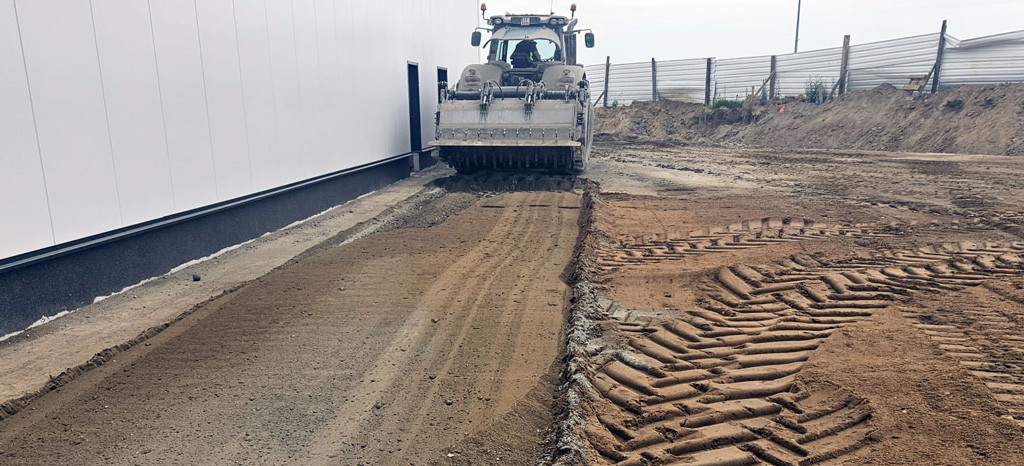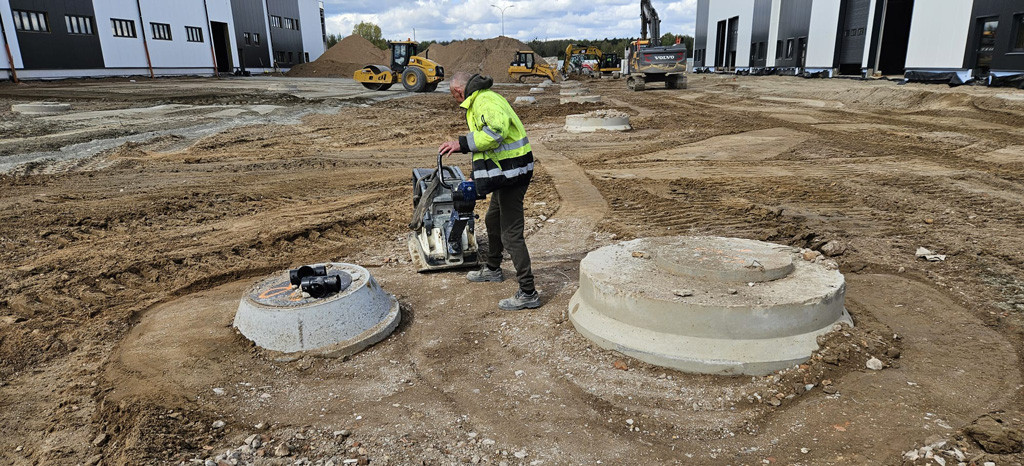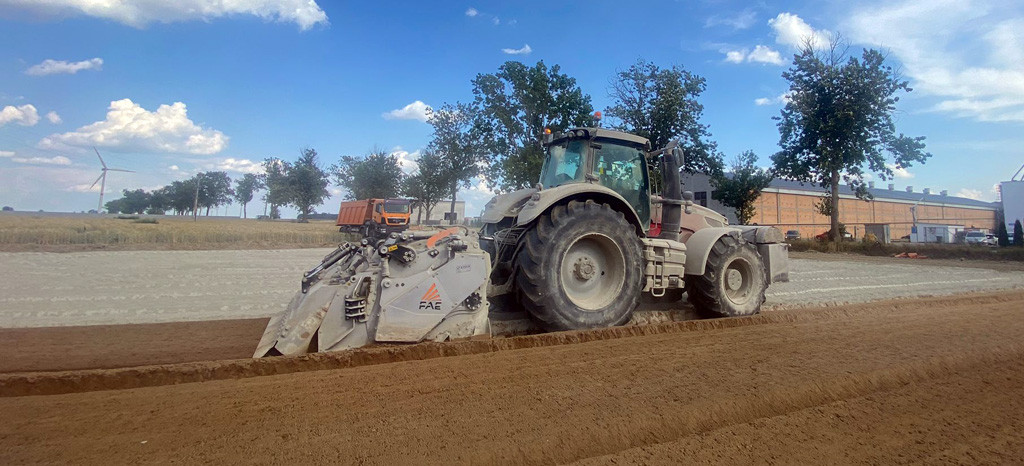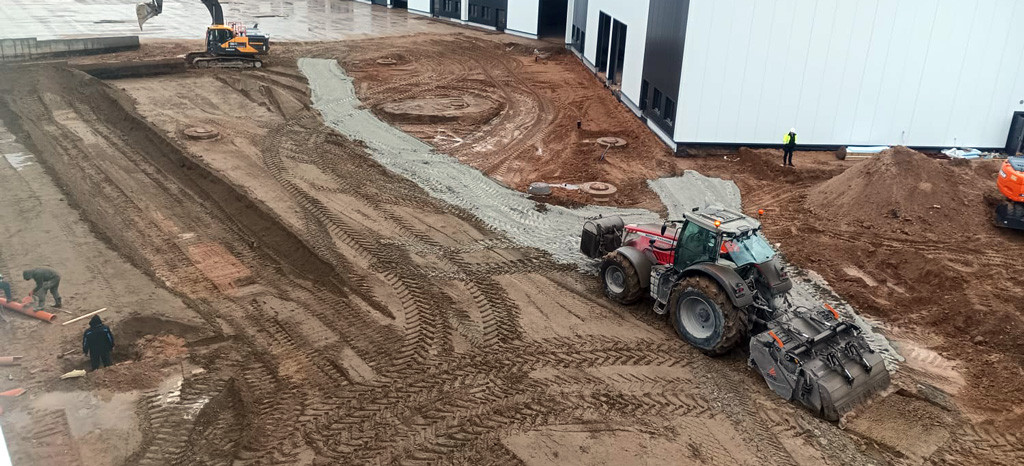
Kopexim is a Polish company specializing in the stabilization of soils and industrial surfaces (pavements, flagstones). It is also involved in road work and shed and parking lot construction.
With 15 employees and state-of-the-art technical equipment, Kopexim can design and implement the construction of industrial surfaces and structures. It owns a multifunction FAE STABI/H machine, purchased in late 2023 to carry out stabilization work.
This story is about the construction of a few yards and parking lots in Białystok, Poland, built for use near a 15,000 m² warehouse.
 |
 |
Mr. Roman Lesik President of Kopexim tells us about the technical features of the project.
“The project consists of stabilizing 3 layers of soil, placed on top of each other like a sandwich, in layers of 30, 30 and 20 cm. Each layer has a different strength range from 1.5 MPa to 9 MPa.
We worked on heavy ground and a high-water table. The client required us to work to very specific parameters with a thorough mixing of the ground, as we have done.
The total area of the work was 45,000 m2. The high-water level caused a lot of difficulties, and the equipment often got bogged down. However, the choice of the trailer stabilizer turned out to be a bull's eye. The self-propelled unit would not have been able to cope due to the huge number of wells and inlets, which amounted to 90 pcs/15,000 m2 of the layer.
Another challenge was the requirement for quick execution of one layer right after another. Any delays increased the stabilization force and caused wear and tear on the STABI/H tools, which had to penetrate the top layer and dig through to the next stabilization layer.
 |
 |
Sometimes, as many as 12 hours passed between one layer and the next. Therefore, work had to be carried out around the clock. The entire scope of work required the delivery of 1,800 tons of cement within 3 weeks, as well as the movement of 7,500 cubic meters of soil and a 5,000-ton delivery of sand for the top layer. The entire project was completed at an impressive time of 2.5 weeks, thanks to top-of-the-line equipment and our skilled engineering and operating staff.
The new FAE STABI/H model was used on the site. The machine had seen 170 hours of use when the work began and had 230 hours of use when it was finished. It was mounted on a Massey Ferguson 8690 (400 HP). The machine worked on 30,000 m2, at a depth of 30 cm in sandy clay, with a fuel consumption of 39-43 l/h, and on 15,000 m2 of sand, at a depth of 20 cm, with a fuel consumption of 27-34 l/h.
The biggest challenges were to connect the stabilization layers so that there were no empty spaces between them and to extend the life of the F/3 teeth to the maximum so that they could work as long as possible. This was achieved by greatly reducing the time between individual layers to 12 hours, a pace which no other machine would have been able to achieve due to the high cost of the teeth in this project and the difficulties caused by inlets and wells”.
Lastly, the biggest surprise for the investor and geologist was the quality of mixing, which they had not encountered before. The customer's comment? “We are happy to recommend this machine!”
Share your story with us! Contact: [email protected]